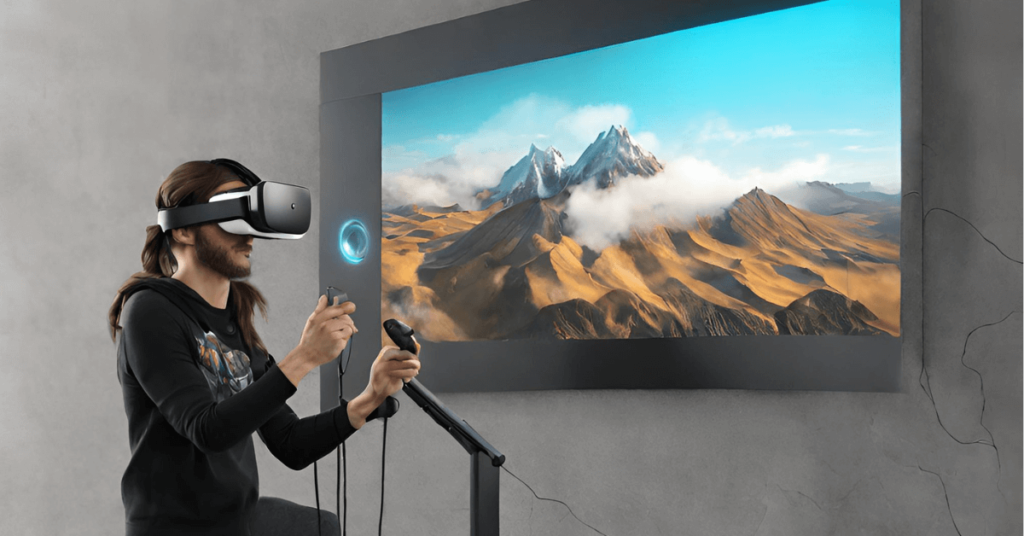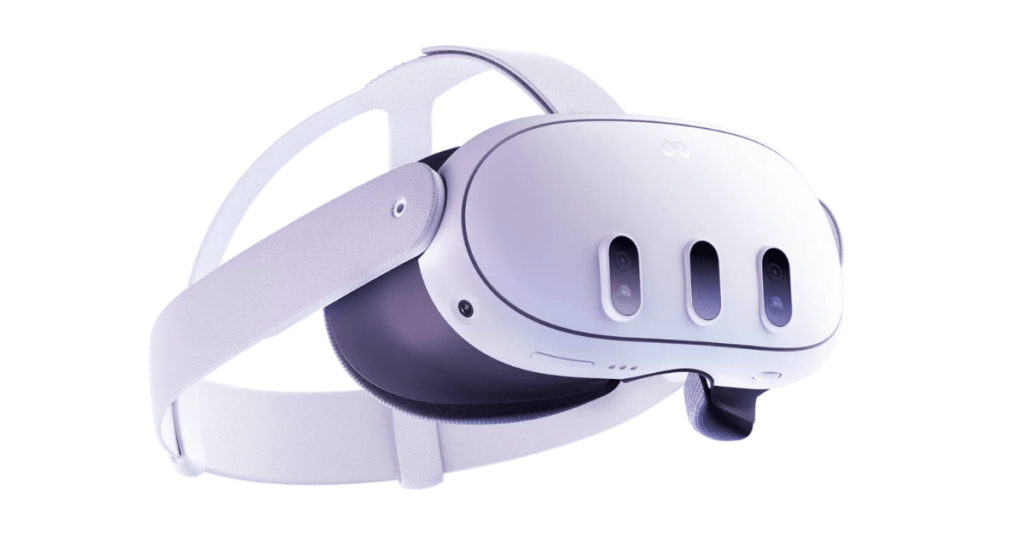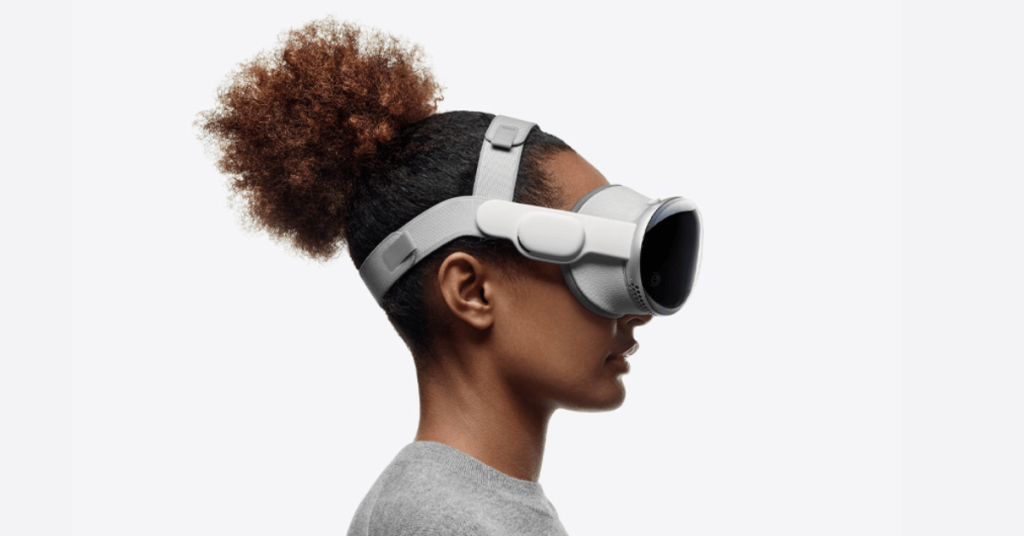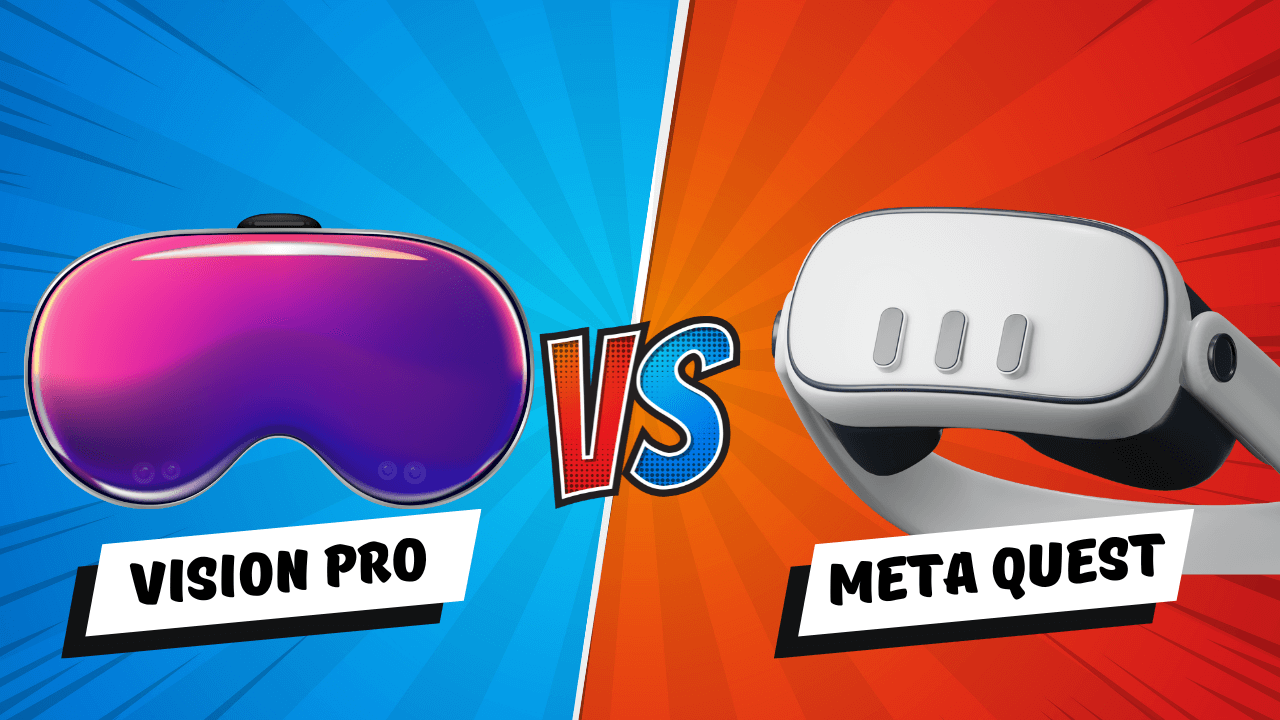Meta Quest 3 and Apple Vision Pro are two highly anticipated mixed reality headsets of 2024, each promising immersive and interactive experiences by merging virtual with physical realities. But how do they compare in terms of features, performance, price, and content? In this blog post, we’ll compare and contrast these headsets and help you determine which is best suited for you.
What is Mixed Reality?

Mixed reality (MR) refers to experiences that blend elements from virtual reality (VR) and augmented reality (AR). VR uses technology that simulates a fully simulated environment that replaces your direct vision, while AR superimposes digital information on top of real-world views, with mixed reality providing a seamless blend of both technologies so users can interact with both virtual and physical objects within one space.
MR headsets use cameras and sensors to capture the real world and display it on high-resolution screens within their device. Furthermore, advanced algorithms create a 3D map of your surroundings as they track head and hand movements to generate virtual images, sounds, haptics, and response mechanisms that match up with your perspective and respond appropriately. Some can even offer eye tracking or voice recognition functionality to further improve user interfaces or interactions.
MR headsets can deliver an array of experiences, from fully immersive VR games and simulations to partially transparent AR apps and widgets. Their potential applications span entertainment, education, training, productivity, and social and health concerns.
Meta Quest 3: The Affordable and Versatile MR Headset

Meta Quest 3 is the third-generation standalone VR headset from Meta, formerly known as Facebook. It follows in the footsteps of its popular predecessor, Meta Quest 2, launched in 2020. Meta Quest 3 aims to be an affordable yet versatile MR headset capable of offering both virtual reality and augmented reality experiences.
Meta Quest 3’s Qualcomm Snapdragon XR2 Gen 2 processor boasts double the graphic processing power of Quest 2, as well as an incredible 4K+ Infinite Display that offers higher resolution and wider field of view than that of Quest 2. Furthermore, Meta Quest 3 features both dual RGB cameras and depth projectors, offering full-color high-fidelity passthrough and mixed reality capabilities with full touch controller support for Touch Plus controllers and Direct Touch hand tracking with natural gesture interaction for virtual objects, plus Spatial Audio, which delivers realistic sound effects to round out its impressive package.
Meta Quest 3 is compatible with hundreds of apps and games available through the Meta Store, including some of the top PC VR titles streamed wirelessly via Meta Air Link. Furthermore, it features Meta Reality, an innovative new platform that facilitates social and collaborative MR experiences, allowing you to create virtual spaces of your own with friends or colleagues and access various apps or content together – not forgetting its unique Persona system that mimics facial expressions and body language in a seamless virtual experience.
Meta Quest 3 can be purchased for $499 for the 128GB model and $649 for the 512GB version in any country where Meta Quest is supported.
Apple Vision Pro: The Premium and Innovative MR Headset

Apple Vision Pro is Apple’s inaugural wearable headset device designed for mixed reality experiences, drawing upon decades of experience designing high-performance mobile and wearable devices. Apple envisioned Vision Pro as an exclusive and cutting-edge MR headset capable of providing work, media, and communications environments within an immersive spatial computing platform.
Apple Vision Pro features a custom micro-OLED display with 4K resolution for each eye and a wide color gamut, along with a 3D camera to capture photos and videos in 3D for playback with immersive Spatial Audio. Furthermore, its dual-chip system consists of an M2 chip responsible for graphics/performance while an R1 chip handles vision/sensor fusion; additionally, it includes eye tracking and voice recognition technology to facilitate intuitive interaction.
Apple Vision Pro runs on visionOS, Apple’s first spatial operating system. Built upon macOS, iOS, and iPadOS for optimal functionality, visionOS enables powerful spatial experiences by giving you full control of Apple Vision Pro with your eyes, hands, and voice – plus using all your favorite apps in a unique spatial way! Arrange apps in any way you see fit and scale them down to achieve your ideal workspace. Explore Safari for web browsing, Create To-Do Lists in Notes, and Chat in Messages simultaneously while seamlessly moving among them all at a glance. Spatial Audio allows you to turn any room into your personal theater and experience stunning content in any environment, while FaceTime helps foster meaningful collaboration and connection among members by featuring life-size video tiles and Persona avatars for communication purposes.
Apple Vision Pro starts at an MSRP of $3,499 for the 256GB model and $3,699 for both 512GB and 1TB models, making them suitable for purchase in certain countries and regions with in-store appointments required to purchase.
Meta Quest 3 vs Apple Vision Pro: Comparison Table
| Feature | Meta Quest 3 | Apple Vision Pro |
| Price | $499 (128GB), $649 (512GB) | $3,499 (256GB), $3,699 (512GB), $3,899 (1TB) |
| Release date | Oct. 10, 2023 | Early 2024 |
| Chipset | Qualcomm Snapdragon XR2 Gen 2 | 1 x M2 chip, 1 x R1 chip |
| Display resolution | 4K+ Infinite Display (2 LCDs with 2064 x 2208 pixels per eye) | 4K (per eye) |
| Storage | 128GB, 512GB | 256GB, 512GB, 1TB |
| Battery life | 2.9 hours (rated) | 2 hours (with external battery) |
| Size | 184 mm x 160 mm x 98 mm | TBA |
| Weight | 515 grams | About 1 pound |
| Sensors | Two RGB cameras and a Depth Projector | 12 cameras, 6 mics and 5 sensors |
| Eye tracking | No | Yes |
| Controllers | Touch Plus controllers and Direct Touch hand tracking | No controllers but you can connect Bluetooth controllers |
Meta Quest 3 vs Apple Vision Pro: Pros and Cons
Meta Quest 3
Pros
- Affordable and accessible
- Versatile and adaptable
- Compatible with a wide range of apps and games
- Supports social and collaborative MR experiences
- Supports wireless PC VR streaming
Cons
- Lower display quality and field of view than Vision Pro
- Heavier and bulkier than Vision Pro
- Requires a Meta account and data collection
- Limited battery life and storage capacity
- No eye tracking or voice recognition
Apple Vision Pro
Pros
- Premium and innovative
- Powerful and performant
- High-resolution and wide-color display
- Supports spatial photos and videos
- Supports intuitive and natural interaction
Cons
- Expensive and exclusive
- Requires an in-store appointment to buy
- Compatible with a limited number of apps and content
- No dedicated controllers or hand tracking
- Requires an external battery pack
Meta Quest 3 vs Apple Vision Pro: Conclusion
Meta Quest 3 and Apple Vision Pro are both impressive mixed-reality headsets that offer different advantages and disadvantages. The choice between them depends on your preferences, needs, and budget.
If you are looking for an affordable and versatile MR headset that can offer both VR and AR experiences and that is compatible with a wide range of apps and games, then Meta Quest 3 might be the best option for you. Meta Quest 3 is also great for social and collaborative MR experiences and for wireless PC VR streaming.
If you are looking for a premium and innovative MR headset that can offer a spatial computing platform for work, media, and communications and that has a high-resolution and wide-color display, then Apple Vision Pro might be the best option for you. Apple Vision Pro is also great for spatial photos and videos and for intuitive and natural interaction.
